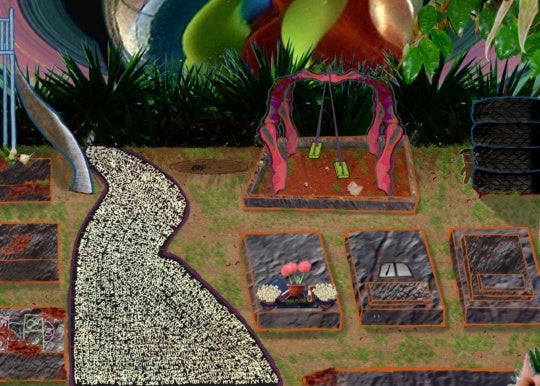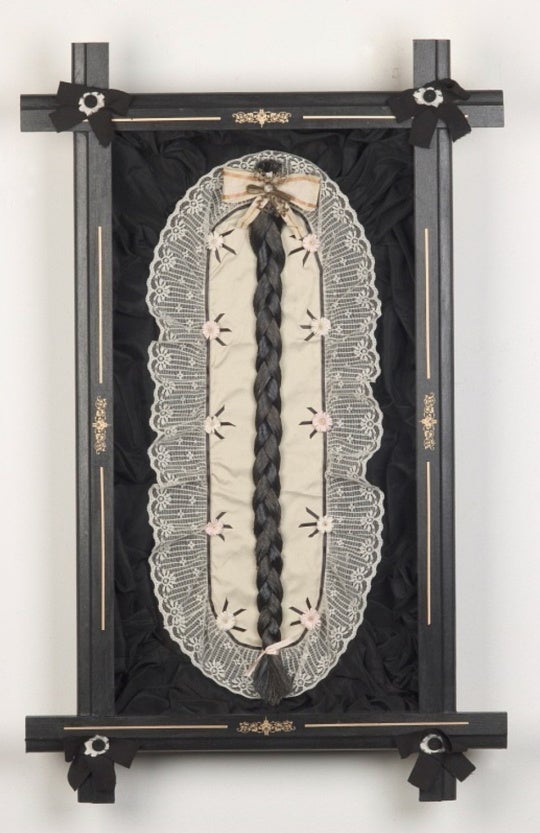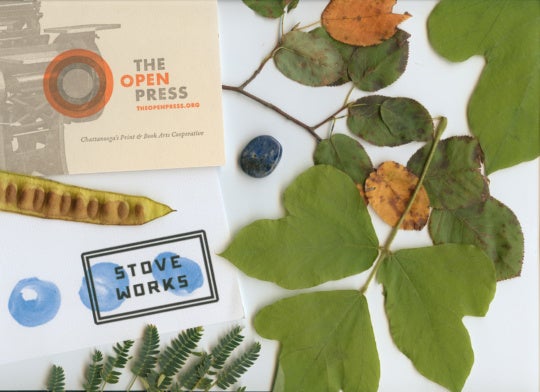
At dusk on the evening of Friday, April 8, a rooftop between Forsyth and Broad streets will be the site of the second installment of Eyedrum’s new dance and performance series called the Boiler Room, which kicked off last month with choreography and performances by Nadya Zeitlin, Brooklyn-based collective Warm Women, and Murmur’s 1/4 Program Resident Grace Thornton.
I sat down with Eyedrum performance committee member Anicka Austin to discuss her organization of the Boiler Room and how it fits into the changing landscape of South Downtown.
Logan Lockner: At the first installment of the series, you mentioned how the name “The Boiler Room” was sort of borrowed from a space at the old Nexus Contemporary Art Center. I wanted to hear more about that and, more generally, the relationship between this present moment in Atlanta and that history. I thought that was a beautiful connection to make.
Anicka Austin: I think so, too! Actually Priscilla [Smith] came up with the idea. The day that she came into Eyedrum and was like, “We should call it The Boiler Room!” was the same day she went to a film screening at the Atlanta Contemporary. Back in the day, Nexus was like a schoolhouse, and they had a tiny room that was like a closet, and artists put work inside it and only a few people could see it at a time. We have this tiny stage and are kind of playing with how these little spaces can be really special and offer that DIY feeling that’s so Atlanta but still be a significant performance.
LL: How do the space of the rooftop and the visibility of the city itself play roles in the Boiler Room, and also in the larger conversation about the context of South Downtown as a social space?
AA: Accessibility has been a big conversation at Eyedrum — the cost of anything we produce, and there not being this invisible wall between the gallery space and the street space. That kind of bleed-over for me is awesome: that feeling that we’re in this less glossed space — all of the spaces in South Downtown, their buildings are leaking and all that — that feeling that this is not a white space. That boundary is not there. We have artists who are really trying to do something experimental, to progress conversation or be open to different types of people coming to see the work.

I also caught up with Sarah Freeman, whose performance Bandaid on the Loose will close the second installment of the Boiler Room. As an undergrad at Emory, Freeman drew upon the university’s recently acquired Flannery O’Connor archives to create her thesis in dance, All Being Displaced: Movement Translations of Flannery O’Connor. Last fall her piece of the Flies, adapted from William Golding’s The Lord of the Flies, was featured in a day of live performances as part of Art on the BeltLine.
LL: Your thesis was an adaptation, and then you did the Lord of the Flies piece after that, and this new piece for the Boiler Room is also an adaptation, but it’s nonfiction, right?
SF: Yeah! The BeltLine piece was a test: does this method of turning literature into dance work no matter the subject? But the characters in The Lord of the Flies aren’t like real people at all, so I realized it was character for me. That’s what creates a strong narrative.
Before the Lord of Flies piece, a long time ago, I was talking to my dad about the Clermont Lounge, and he was like, “That reminds me of Morganna the Kissing Bandit,” so we wikipedia’d her at the dining room table … She ran away from Catholic school at 13, was living on the street, and saw a “help wanted” sign at a burlesque joint, thinking she was gonna be a dishwasher or something. She goes in, she has I-cup boobs, and they’re like, “You gotta be an exotic dancer.” She tells them she’s 18, but she’s 13! The whole thing is like, “Is this sad? Is this funny? Is it both?”
LL: And it sounds like a tall tale too!
SF: Exactly! She’s really mythological, and that plays into the imagery that I’ve delved into. In 1969—I think she’s in her 20s—she decides she’s going to run onto the field at a Cincinnati Reds game and kiss Pete Rose as he’s coming up to bat. The newspaper the next day says, “Bandit steals a kiss from Pete Rose,” and that’s how she gets the name the Kissing Bandit.
She kissed over a hundred people overall: baseball players, basketball players, Kareem Abdul Jabbar, Cal Ripken, Jr., hockey players, and a hockey chicken mascot — that’s my favorite one. There’s a picture of her, on the ice, straddling this chicken.

But one of the hardest things about doing this work is that she’s a real person; she’s still alive. She lives in Columbus, Ohio. She goes by Mo. She married her tax attorney. She’s like this totally normal person, but the character I’ve created is a little bit Morganna, a little bit me, and a little bit mermaid. I was thinking about female archetypes and ways in which your body can both help you and hinder you — which is actually very similar to the Flannery O’Connor work, because I was really interested in how her lupus crippled her and how that forced her to spend more time writing. I wanted to add myself to the equation because it is a character study but it’s not an impersonation. It’s satirical, but it’s also truthful and earnest.
LL: How does it feel to be the solo performer and also the choreographer? It’s a one-woman show in a way, which is also like Morganna.
SF: When I first started thinking about it, I wondered if it would be a solo I choreographed for someone else or a group piece, and I realized it was a story about self-creation. She was the first — she was the first Kardashian, you know what I mean? She was a celebrity before the Internet, so she had this ability to fade back into oblivion. But if she existed now she would be the Instagram queen. She was constantly creating her identity, and with that aspect of the creation of self I decided I needed to be the one creating and performing. The piece is about identity and how it’s constantly performed.

LL: What’s it like to be a young, emerging dancer in Atlanta, especially in terms of the resources and visibility that are available to you?
SF: It’s hard for individual dancers to make work without a fiscal sponsor, because right now there are so few grant opportunities for individual performing artists. I think there’s a misconception that dance functions on a company model, which is true for a lot of people, and that’s how funding is structured. But that’s not how young people are making dance work. People accept that visual artists work alone and can do stuff on their own, but it’s hard to say, “Give me money so I can put on a mermaid tail and derp around on a rooftop.” But it’s important!
“Bandaid on the Loose” will follow HUM, a solo performance by dancer Emma Alley. Upcoming installments of the Boiler Room will feature performances by Atlanta-based collective fly on a wall, Gabriella Dorado, and Corian Ellisor.
Logan Lockner is a writer living in Atlanta. He studied English literature and linguistics at Emory University and University College London, concentrating on the work of Virginia Woolf. His writing has appeared in Art Papers and online in Oxford American, Paste, and elsewhere. He was a participant in the second cycle of BURNAWAY’s Emerging Art Writers Mentorship Program.




